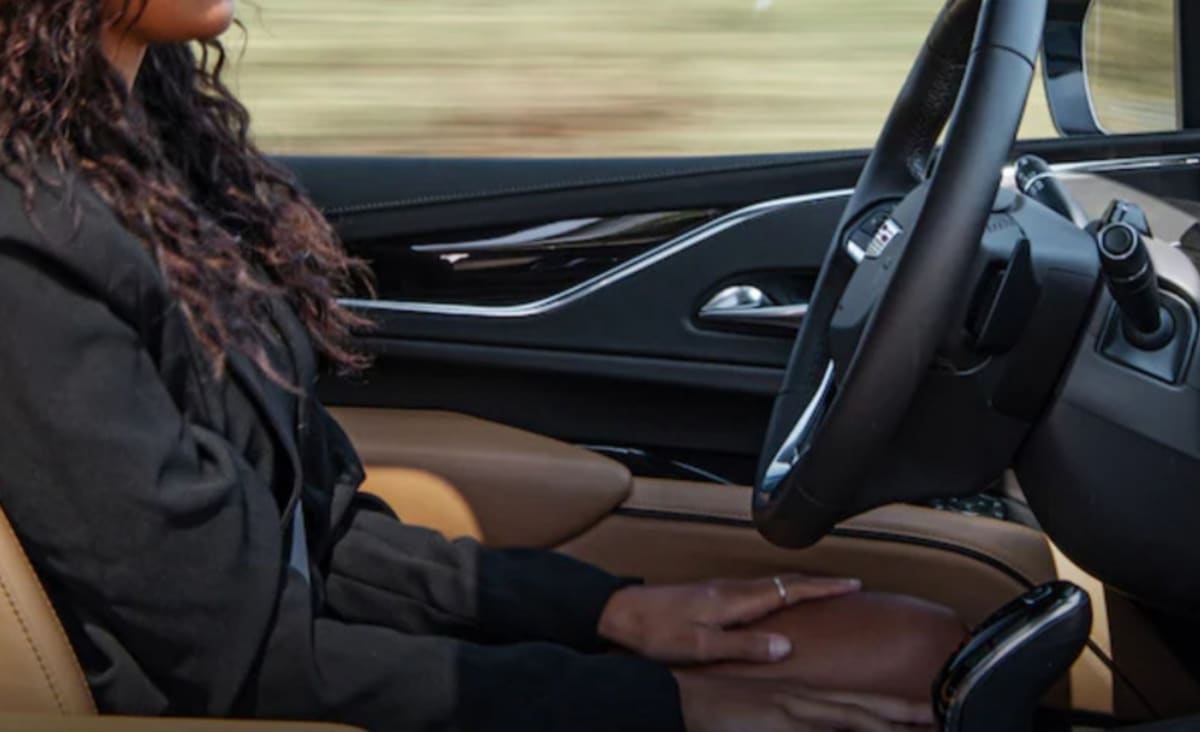
interestingengineering.com
GM Reveals ‘Hands-Free’ System That Handles 95% Of All Driving Scenarios
GM has revealed a "hands-free" driver-assist system that handles 95% of all driving scenarios, making it a worthy Tesla Full Self-Driving beta competitor.
Science & Tech
General Motors (GM) has unveiled a new and more capable hands-free advanced driving assistance system dubbed Ultra Cruise during its two-day investor event that began Wednesday, per a company press release. The system, set to be available on select models in 2023, will be able to handle 95% of all driving scenarios and will eventually be used on every paved road in the United States and Canada, bringing the company closer to its goal of zero crashes, zero emissions, and zero congestion.
Ultra Cruise will be able to change lanes automatically, make left and right turns, obey traffic signals, avoid obstacles, and even park itself in residential driveways using a variety of optical cameras, radar, and LiDAR sensors.
At launch, the system will work on 2 million miles (3.2 million km) of North American roadways, including highways, city streets, and subdivision streets. The project will then grow to encompass 3.4 million miles (5.5 million km) of asphalt.
The automaker didn't reveal how much buyers will have to pay to add Ultra Cruise as an option to their vehicles, or whether it will be a one-time fee or a subscription-based fee.
What's different from Super Cruise?
GM is not aiming for a fast and flashy reveal in 2023; instead, it'll follow the same slow-rolling strategy as when it first unveiled Super Cruise, the automaker's first-generation hands-free driver-assist system, in 2017. Because of this reason, the newer system will first be available as an option in Cadillac cars, before gradually expanding to other GM brands like GMC and Chevrolet.
The new system will take its place in the company’s lineup next to Super Cruise, which will be available on "more mainstream vehicles", while Ultra Cruise will be kept for "premium entries."
Super Cruise has been likened to Tesla's Autopilot since its release and is often viewed as a safer, more competent version. This is thanks to Super Cruise's utilization of LiDAR map data, high-precision GPS, cameras, and radar sensors, as well as a driver attention system that checks the driver to verify they're paying attention.
Ultra Cruise system capabilities
And Ultra Cruise takes it a step farther by being designed to work on city and subdivision streets, as well as paved rural roads, in addition to highways, unlike Super Cruise. Both include LiDAR, which has been rare in production vehicles due to the high costs associated with the laser sensor and has been pit against computer vision systems in heated debates.
Ultra Cruise is a "route following feature" that preserves headways and follows the speed limit, according to Jason Ditman, GM's chief engineer, who spoke during a briefing with reporters, reported by The Verge.
From support automatic and on-demand lane changes to parking in residential driveways, Ultra Cruise has enhanced capabilities indeed, but it won't be able to handle all types of driving situations. A roundabout, for example, is a form of difficult road situation that Ultra Cruise won't be able to navigate, according to Ditman.
Despite its impressive capabilities, Ultra Cruise is still a Level 2 system, GM says, and not a fully autonomous Level 4 system. Its functionality has become more robust and it will be available on more roads, but this still means the driver is required to stay vigilant at all times. When the driver needs to control something, a light bar in the steering wheel will inform them with increasing lights and haptic input and alert them via a voice assistant when it's time to take the wheel.
























































